Monday 27th March - Breathe Deeply
The breath is such an important part of yoga. It's what makes it yoga as opposed to an exercise class. When we practice with conscious breathing, the mind becomes calmer and the nervous system does too. Many physiological changes take place - including the relaxation of muscles the release of different hormones into the body.
We practice a little bit of Pranayama at the beginning of each class, pay attention to the breath while we do the asana work (postures) and allow the breath to soften and quieten in Savasana. I often talk about using the breathing apparatus as fully as possible - the lungs, the diaphragm, the ribs... but the respiratory system is so much more complex than this. You'll probably remember some of it from Biology class at school but I'm sharing this article from the American Lung Association www.lung.org which explains it all clearly... it's fascinating stuff...

The Respiratory System
Your lungs are part of the respiratory system, a group of organs and tissues that work together to help you breathe. The respiratory system's main job is to move fresh air into your body while removing waste gases.
Why are lungs important?
Every cell in your body needs oxygen in order to live. The air we breathe contains oxygen and other gases. Once in the lungs, oxygen is moved into the bloodstream and carried through your body. At each cell in your body, oxygen is exchanged for a waste gas called carbon dioxide. Your bloodstream then carries this waste gas back to the lungs where it is removed from the blood stream and then exhaled. Your lungs and respiratory system automatically perform this vital process, called gas exchange.
In addition to gas exchange, your respiratory system performs other roles important to breathing. These include:
· Bringing air to the proper body temperature and moisturizing it to the right humidity level.
· Protecting your body from harmful substances. This is done by coughing, sneezing, filtering or swallowing them.
· Supporting your sense of smell.
The Parts of the Respiratory System and How They Work
Airways
SINUSES are hollow spaces in the bones of your head above and below your eyes that are connected to your nose by small openings. Sinuses help regulate the temperature and humidity of inhaled air.
The NOSE is the preferred entrance for outside air into the respiratory system. The hairs lining the nose's wall are part of the air-cleaning system.
Air also enters through the MOUTH, especially for those who have a mouth-breathing habit, whose nasal passages may be temporarily blocked by a cold, or during heavy exercise.
The THROAT collects incoming air from your nose and mouth then passes it downward to the windpipe (trachea).
The WINDPIPE (trachea) is the passage leading from your throat to your lungs.
The windpipe divides into the two main BRONCHIAL TUBES, one for each lung, which divides again into each lobe of your lungs. These, in turn, split further into bronchioles.
Lungs and Blood Vessels
Your right lung is divided into three LOBES, or sections. Each lobe is like a balloon filled with sponge-like tissue. Air moves in and out through one opening—a branch of the bronchial tube.
Your left lung is divided into two LOBES.
The PLEURA are the two membranes, actually one continuous one folded on itself, that surround each lobe of the lungs and separate your lungs from your chest wall.
Your bronchial tubes are lined with CILIA (like very small hairs) that move like waves. This motion carries MUCUS (sticky phlegm or liquid) upward and out into your throat, where it is either coughed up or swallowed. Mucus catches and holds much of the dust, germs, and other unwanted matter that has invaded your lungs. You get rid of this matter when you cough, sneeze, clear your throat or swallow.
The smallest branches of the bronchial tubes are called BRONCHIOLES, at the end of which are the air sacs or alveoli.
ALVEOLI are the very small air sacs that are the destination of breathed-in air.
CAPILLARIES are blood vessels in the walls of the alveoli. Blood passes through the capillaries, entering through your PULMONARY ARTERY and leaving via your PULMONARY VEIN. While in the capillaries, blood gives off carbon dioxide through the capillary wall into the alveoli and takes up oxygen from air in the alveoli.
Muscles and Bones
Your DIAPHRAGM is the strong wall of muscle that separates your chest cavity from the abdominal cavity. By moving downward, it creates suction in the chest, drawing in air and expanding the lungs.
RIBS are bones that support and protect your chest cavity. They move slightly to help your lungs expand and contract.
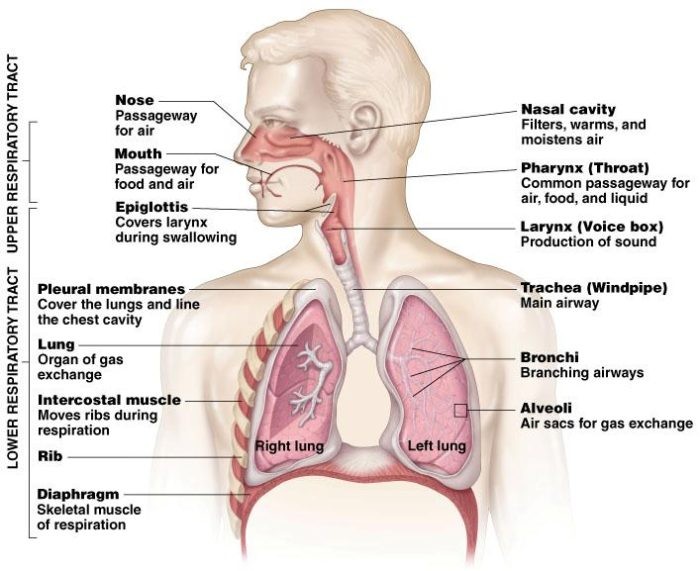
Top Ten Houseplants That Literally Clean the Air via Perrywood Nursery and Garden Centre www.perrywood.co.uk
Fresh air is not something we get enough of in modern life, especially as most of us seem to be increasingly stuck inside with our great British weather!
Indoor air can be stale, and thanks to modern synthetic materials and temperature regulation, it also contains pollutants and is often well below recommended humidity levels.
Synthetic furniture, paints and computers, to name but three, silently pump chemical vapours into the air, while your heating system will dry out your air.
This can lead to complaints such as allergic attacks, asthma, headaches and tickly coughs.
This is where plants in your house can help!
The humble plant can make all the difference to the air we breathe indoors. They work hard at cleaning our air of these toxins and releasing humidity back into the atmosphere.
In fact, there are many health benefits to being near plants. Studies by NASA prove certain plants help keep the air in your house cleaner and increase oxygen levels. More general studies over time have shown that plants help us to:
- Have fewer headaches and coughs and feel less tired
- Have fewer allergy symptoms
- Recover faster from the common cold
- Feel less stressed
- Be more productive and creative if you work from home
But not all plants are the same. Some like more light or heat than others, and some clean the air better so it is important to get the right one.
To help you choose the right plant, here are our top ten air-purifying plants that will clean your air:

ALOE VERA – What’s great about this plant is that it emits oxygen at night time whilst simultaneously taking in carbon dioxide- something we naturally produce when breathing. All this leads to a purer quality of air and a better night’s sleep.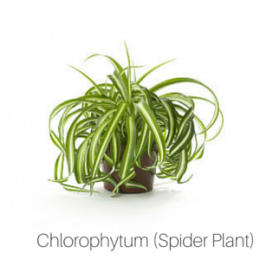
CHLOROPHYTUM (SPIDER PLANT) – The well-known Spider Plant is also a champion cleanser of air. The NASA tests showed it to remove around 90% of the potentially cancer-causing chemical formaldehyde from the air. Since formaldehyde is found in common household products like adhesives, grout and fillers, it’s a good idea to keep one of these plants around your kitchen and bathrooms especially.
Top Tip: The Spider Plant is also considered a safe house plant if you have pets your house

SANSEVERIA (SNAKE PLANT) or is even known as ‘the mother-in-law’s tongue’…this plant is excellent for filtering out formaldehyde, which is common in cleaning products, hygiene, and personal care products.

SPATHIPHYLLUM (PEACE LILY) is beauty in all its simplicity, the peace lily boasts strong dark green leaves and tall elegant white flowers. Really easy care for…this plant helps to filter out harmful benzene, trichloroethylene, and formaldehyde toxins. The moisture given off by these striking flowers can boost a room’s humidity by up to 5%. This way, you can say goodbye to those irritating dry noses and sleep peacefully.
Top Tip: This plant is poisonous to cats and dogs…so if your pet likes to nibble your house plants then choose the Spider Plant instead

DRACENA MARGINATA (DRAGON TREE) This plant is useful for removing xylene, trichloroethylene, and formaldehyde, which spreads in indoor air through lacquers like your hairspray or furniture polish or furniture varnish.

ARECA PALM An extremely elegant palm with delicate fronds which is good enough to be situated in your living room or hall… This pleasant plant releases lots of moisture into the air, removes toxins very effectively, is easy to look after and resists insect infestations well.

BOSTON FERN A mass of lush foliage helps this plant to scrub the air of toxins in a room and improve humidity. With a bit of regular misting and watering it should thrive.

FICUS ELASTICA (RUBBER PLANT) Bred for toughness, this is the plant to choose if the room doesn’t have a lot of natural light. Its architectural form makes it a designer’s favourite and its simple, large leaves look good in most places. Especially good at removing formaldehyde, one of the most common toxins found in our indoor air.

FICUS BENJAMIN (WEEPING FIG) The Weeping Fig is perfect for filtering pollutants that typically are in carpeting and furniture such as formaldehyde, benzene, and trichloroethylene.
Top Tip: Most house plants only need re-potting every 1 or 2 years

SCINDAPSUS Another powerful plant fighting formaldehyde, it will grow in a cascade of green from a hanging basket.
Top Tip: If you live on a busy road, fill your house with this beautiful gushing greenery to banish car exhaust fumes
There are many more plants that can make your home look and smell beautiful and fresh but these 10 are a must for keeping you and your family healthy by providing natural air filters and increasing the oxygen levels.
Top Tip: It is recommended by NASA that you have between 15 and 18 plants in your home to purify the air you breathe.
When I went on holiday last summer I collected up all my houseplants and put them all in the bathroom for ease of watering for my friend who had kindly taken on the task of looking after them while I was away. Here's a photo of them.... I think NASA would say the air in my home should be ok!!!
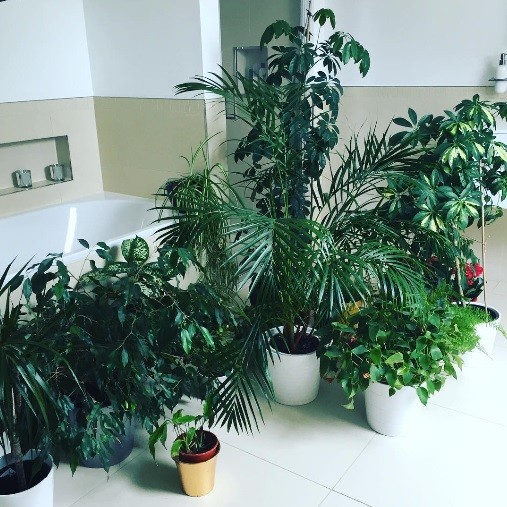
This Week's Recipe... Parsnip and Apple Soup
This recipe came from the Tesco free magazine which was full of interesting meal ideas. The soup was hearty and nourishing and made a really tasty Saturday lunch.
You will need:
2 apples
1 tablespoon of olive oil
a knob of butter
1 onion, diced
500g parsnips, peeled and chopped
2 garlic cloves
1 tablespoon of curry powder (I was a bit nervous of putting this much in so I put in half a tablespoon)
800ml vegetable stock
4 teaspoons of soured cream
some snipped chives
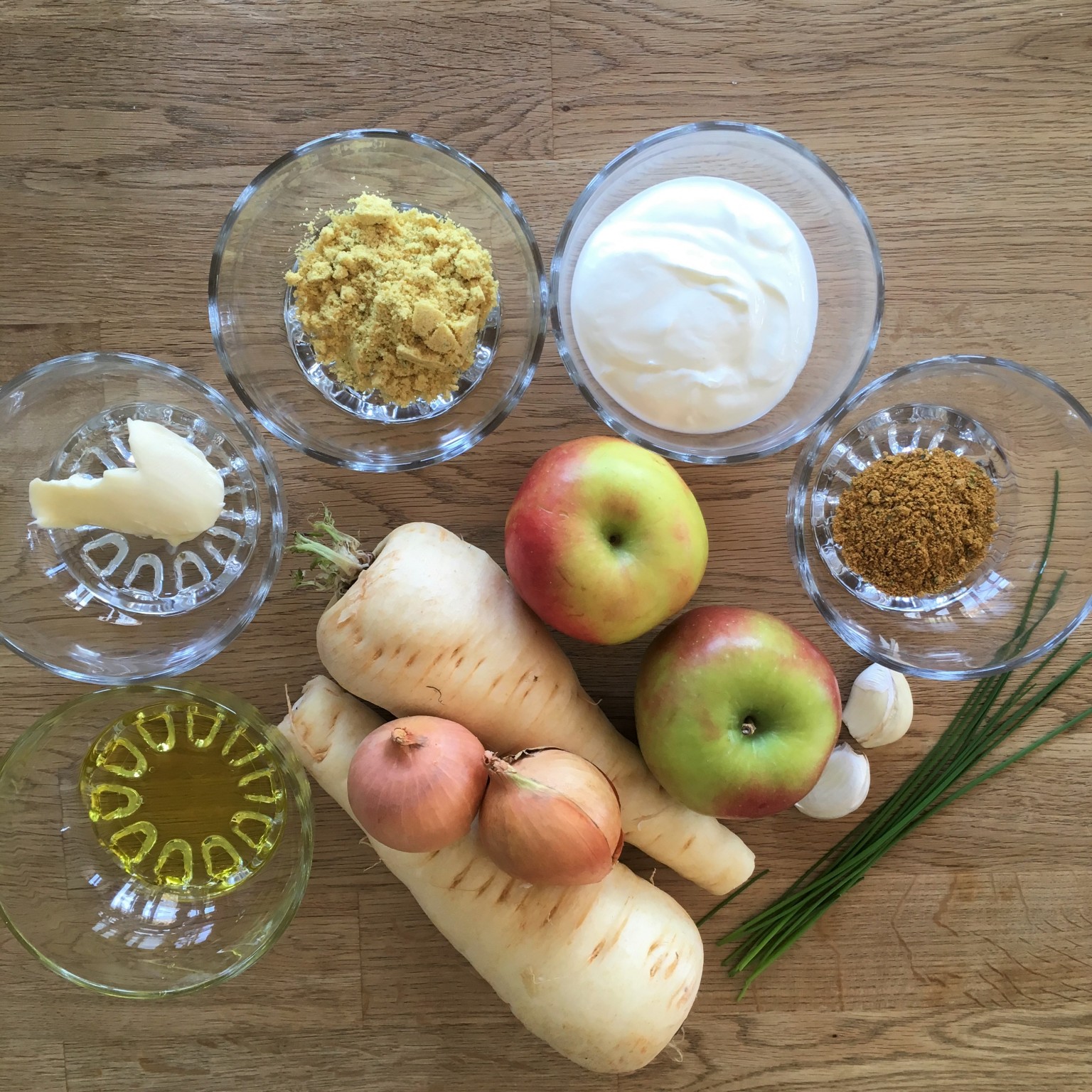
And here's how to make it:
Heat the oil and butter in a heavy bottomed pan.
Add the onion and parsnips, cover and cook gently for 10 minutes.
Chop the remaining apples and add to the pan with the garlic and cook, covered, for 5-10 minutes.
Stir in the curry powder and cook for 30 seconds.
Add the stock and simmer uncovered for 10 minutes.
When cool enough, whizz in a blender until smooth.
Serve with a spoonful of soured cream, some chives and black pepper to garnish each bow.
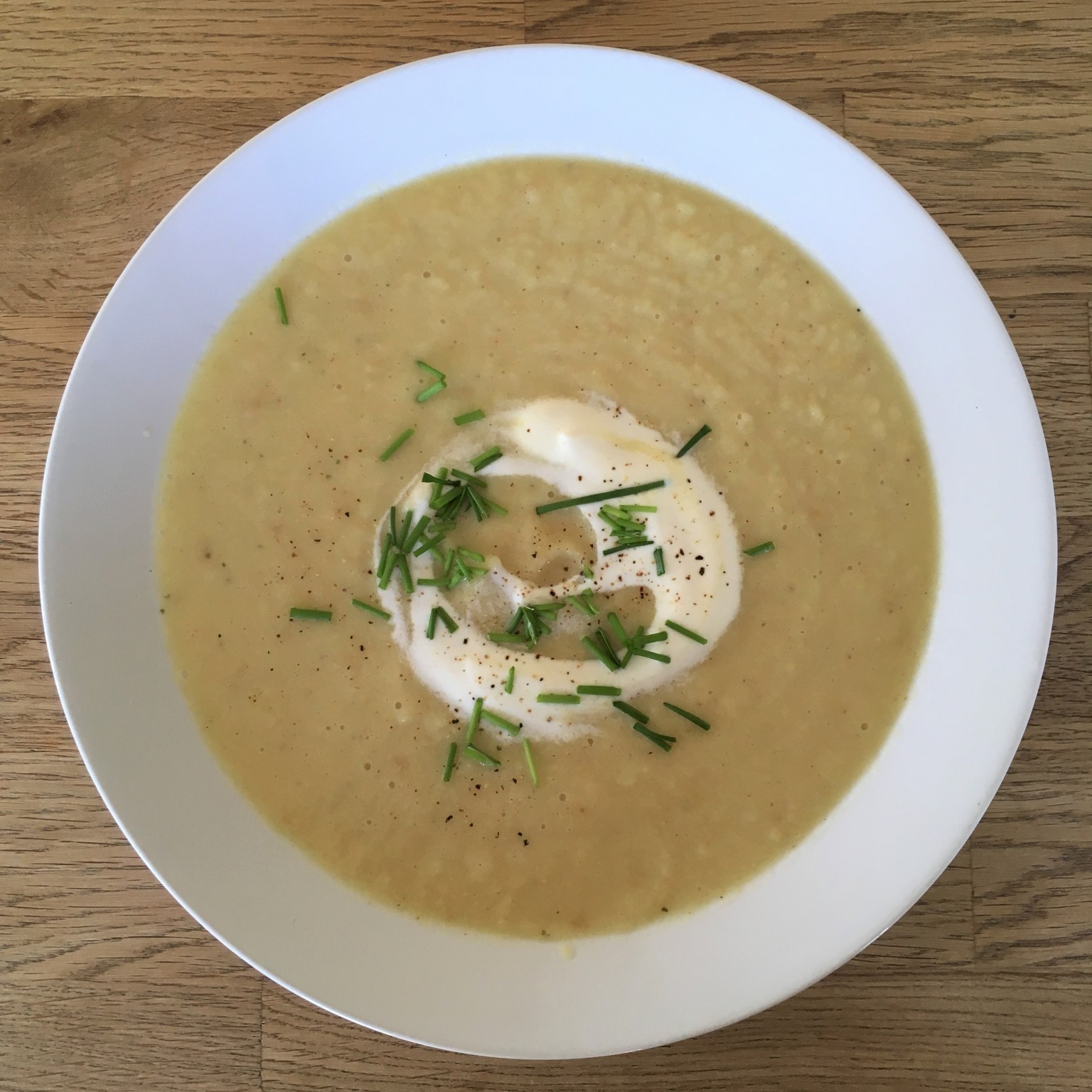
This Week's Advice From... A Rainforest

This Week's Musical Offering... Oxygen Bar by Deep Divers - a beautifully relaxing track - perfect for some Pranayama or Savasana, and it has a lovely video of the Northern Lights too.
This Week's Video...A 3 minute clip from Dr. Andrew Weil on whether breathing exercises can change your health.






